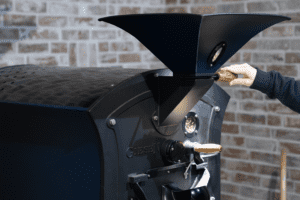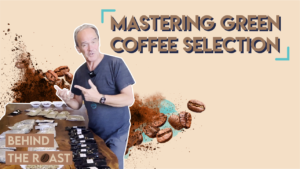Welcome to ‘The buzz about decaf coffee’. We are so excited to share our enthusiasm about the great profession and craft of roasting coffee. We hope you love it as much as we do. Enjoy the second episode of ‘Behind the Roast’ with Willem Boot! Read the summary below.
Decaf coffee is often dismissed by specialty coffee roasters as an uncool coffee category. The consumption of decaffeinated coffee beans has been steady over the past 10 years. On average, decaf coffee is about 15% of overall coffee consumption and it appears that specifically, millennials have taken a growing interest in enjoying decaf coffee beverages.
History of decaf coffee
The process of decaffeinating coffee was first developed by Ludwig Roselius; in 1906 he launched the world’s first brand of caffeine-free coffee under the name “Kaffee Hag”. Initially, the processing to remove the caffeine, which is an odorless, bitter-tasting alkaloid, was relying exclusively on solvents like methylene chloride. Fortunately, natural, chemical-free decaffeination options like Swiss Water, Mountain water, and Critical CO2 have become widely available to the specialty coffee roasting community.
An average cup of Arabica coffee contains up to 200 milligrams of caffeine, which is about the weight of one single green coffee bean. The Swiss Water and Mountain Water process involves the soaking of green, unroasted coffee in pre-heated water. During this soaking process, about 95% of the caffeine dissolves, together with essential sugars and oils which determine the flavor profile of the coffee. This green coffee extract is then filtered using active carbon filters which remove the caffeine without impacting the other essential coffee compounds. The remaining green coffee extract is subsequently reintroduced to the beans and after a gentle process of drying, we finally have the unroasted decaf coffee.
Roasting decaf coffee
The entire process has quite an impact on the cellular composition of the green beans. The immersion into water and then the drying cycle degrades the rigidity of the cell walls. As a result, you should be quite diligent while applying heat during the roasting cycle. I recommend starting the roasting process at a lower temperature; at least 25 degrees F or about 10 degrees C lower. On top of that, you should allow sufficient time for the Maillard reactions to unfold. These reactions start peaking around 300 degrees F or 150 degrees C and continue until the first crack. From 300 F (150 C) to the first crack you should limit the Rate Of Rise per 30 seconds (RoR) of the bean temperature to 8 degrees F (3 degrees C). This gentle roasting style will promote the sweetness of your decaf coffee.
If you’re a user of a Giesen roasting machine, then I recommend increasing the air pressure (Pa setting) to 160 at a bean temperature of 300 F (150 C) and you should consider increasing the drum speed by 5 to 10 points. This adjustment will help maintain a consistent roast development and it will prevent the risk of baking, which can happen if the RoR becomes too low. How to become cool as a specialty roaster of decaf coffees? Consider developing your own, proprietary decaffeinated coffee beans. Usually, the minimum required batch size of a custom-made, direct trade decaf coffee is up to 75 bags of green coffee beans (60-kg bags). For this purpose, I recommend teaming up with a few colleague roasting companies and as a result, you could send your own green beans to a natural decaffeination facility, and voila, you’re off to launch your own unique decaf coffee product line!
Please contact me for any advice or help.
More about roasting decaf coffee
Below you can download an extra article about roasting decaf coffee. In this article, you can read more about decaffeination, coffee quality, roasting strategies, and tips & tricks.
Willem Boot
Willem Boot is Brand Ambassador of Giesen Coffee Roasters and founder of Boot Coffee Campus, a leading coffee training institute for the coffee industry. Check the program of specialized courses at www.bootcoffee.com.






